Some well known tanks!
IS-1

IS-2

IS-3

IS-4
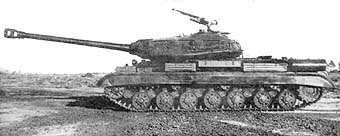
IS-5
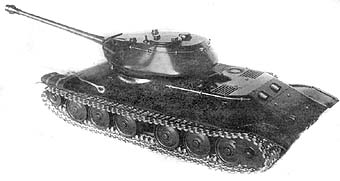
IS-6
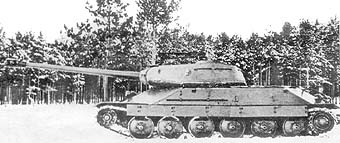
IS-7
T-10 (IS-8/9/10)
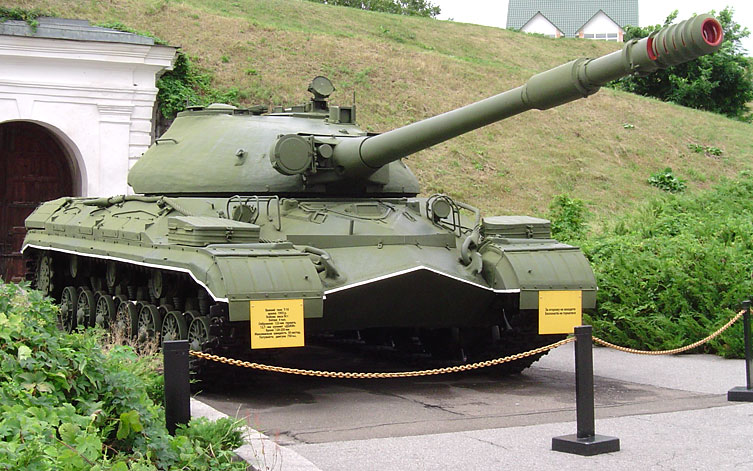

Some well known tanks!
IS-1

IS-2

IS-3

IS-4

IS-5

IS-6

IS-7
T-10 (IS-8/9/10)

T-10 was a last soviet heavy tank.
After that the Soviet tank doctrine has been finally turned to mass production of medium T-54/55/64/72.
It seems the USSR had the same problems with heavy tanks as the UK and US did, they were unreliable and a massive drain on resources…
I’m not sure coz Americans has choosed the other way…
American 60-tonns Abrams currently is the heavest tank of the world:)and damn expensive…
Recently i watched the film on DiscaveryScience about Abrams.They claimed its’ the fastest tank ( 70 km /h), its’ TWICE more speedy then the T-34, they proudly said.
This is not true,of course.
firstly T-34 was able to drive 50 km/h.
secondary T-80 with gas-turbine yet in 1990 fly almost 85 km/h.
I agree the M1A2 Abrams is heavy in the strictest sense of the word. But today we could argue that it’s not that much heavier than its contemporaries such as the German Leopard II, the French LeClerc, and the British Challenger II. The M1 was designed from the ground up to use newer automotive technologies that could handle the weight and power needed and still provide vital reliability…
The Abrams does use way too much fuel, and I think the US is now thinking of eventually replacing the aging, thirsty turbines with an MTU turbo-diesel unit once the Wars are settled. Incidently, I believe 70 kph is the limit with the restriction of the engine-governor. It should also be noted that the M1 actually has a far better cross-country performance due to its modern suspension and will not beat its crews near to death. According to Wiki, the tank can achieve speeds up to 97 kph with the restricter removed, but those speeds will pretty much destroys the suspension and eats the tracks…
The same with the T-90.
It’s equiped with turbo-diesel just like old simple and reliable T-72. The gas-turbine is damn expensive and its needs a THREE Times more fuel per each km of way.The other trouble of using the turbine - it needs a tonns of pure air , that might be the hard in the desert.The first T-80 had deserved the reputation of unreliable tank in Afganistan yet in 1980-yy becouse dust gets into the turbin, damagin superexpensive mechanism. Tank can be stopped with losing of functionality right on the battlefield ( with serious consequenced for crew). That’s why soviet tank crews prefered the turbo-diesel T-72, inspite of newest active armor of T-80.
The great speed of newest gas-turbin tanks wasn’t endeed demanded at the condition of cont-partisan warfare.
Heavy tanks were an outgrowth of WW1 really - the British for example had their Rhomboidal heavy tanks that were optimised for the break-in to the enemy positions but were so slow (due to the weight of armour and armament) that they couldn’t move at more than walking pace for exploitation. They also had their Whippet tanks that were significantly faster (8mph) but with limited armour and armament. That division continued until enormously powerful engines became available at the back end of WW2, leading to the development of “Universal” or or “Main Battle” tanks which could fulfil both roles. The T-34 was close to being one (if a bit undergunned), and I’d personally rate the Centurion as being the first of these Universal tanks. T-80, Abrams, etc. are all examples of this type of tank - fast and heavily armoured with an extremely powerful main gun.
Sure Centurion was the first Universal medium tank in full sense, that btw seriously has impressed the soviets in 1949, when T-54 was developing.
Especialy it’s MK6 modification with 105 mm gun - the tank that made the Soviets engeneers to instal the smooth-barrel 110 mm gun on T-62 in hurry:)
I don’t think though the Heavy tank concept was ww1 outgrowth. The first really effective heavy tank was Tiger2 , that though had a unreliable transmittion and low speed ( 12-15 km/h accorging tests) . But all it was just “children’s defects” that might be very soon eliminated . Just extremaly short time of combat service ( since end 1943 -1945) has not allowed the GErman designers to creat the real Heavy masterpiece IMO.
The ww1 multi-turret monsters were in fact just easy targets for any-caliber artillery.Like Soviet T-35 ( the copy of british Vikkers)
Oh, no real argument that they were any good - just saying that the concept went back that far. Until the Centurion, the British had always used “Cruiser” tanks in the light role and “Infantry” tanks in the heavy role. So far as I’m aware (and my knowledge on this subject is pretty woeful), other countries used the same division between light and heavy tanks too.
The French also had strict delineations between infantry and cavalry tanks,even though many of their designs were quite good and blurred the rigid distinctions with models such as the SOMUA S35. The US, insomuch as they had any tanks, also followed the infantry vs. cavalry model…
Hello!
For T-64/T-72 I prefer to use the Main Battle Tank definition.
These tanks were able to fulfill the requirements for support, Tank vs tank fight and breakthrough. So - they were no any need for heavy tanks like T-10 (which was a preatty good beast - and not a rare one - several thousands had been produced!).
TGR
Hello!
I have an interesting story :lol:
During the Hungarian revolution (uprising or counter-revolution earlier) in 1956 Hungarians captured a brand new soviet T-54 and handed over to the British Embassy. The tank shocked western experts - they declared the 100 mm gun very dangerous .
So they developed the excellent and classic 105 mm gun.
After the socialst countries face with this gun (e.g. Arab-Israel wars) they started to develop the smooth-bore guns (115 and later 125 mmm).
So the circle of development has been closed :lol:
TGR
JS-3s finished their carrier in Budapest 1956.
TGR


Please excuse me for my continuous scientific impertinence, my dear Mr. Tiger 205, but in reality those Soviet engineers within the OKB-9 under direction of the Chief Engineer F. F. Petrov had actually constructed that legendary 115 mm smoothbore cannon 2A20 [army designation: U5-TS “Molot” (Hammer)] in 1958 – nine years before the Arabs even bumped into those very intelligently upgraded Israeli M48A3’s with a new 105mm British L7 gun (emplaced in the Israeli Urdan cupola).
You know – just for the record. 
Sure, whatever you say Librarian. 
Пожалуйста, my dear Mr. Prime Minister. In the meantime, if you do have some spare time on your disposal, just check one incredibly intriguing article, namely this one: Krapke, P.: Zur Sowjetischen Kampfpanzerentwicklung (“Truppendienst”, 1979. - No. 1). I am assuring you that you will be absolutely delighted. 
In the meantime, here are some additional snapshots which are connected with our heavy metal entity:

Budapest, Andrássy út – 1956
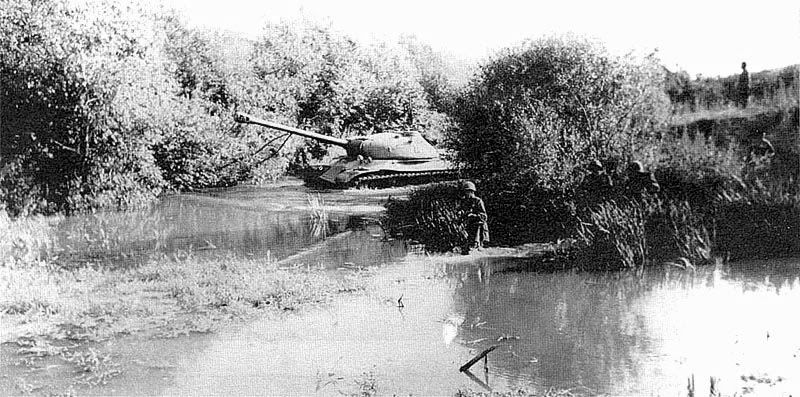
Hungary, 1955 – JS 3 on maneuvers
In the meantime, as always – all the best! 
OK, Dear Mr. Librarian,
let me correct it:
“The 100 mm D-10T and D-54 tank guns had fierce enemy in a form of British L4A1 tank gun. The Soviets decided to “recaliber” the already existing 100 mm D-54TS tank gun. The modifications done to gun included removing the rifling of the gun, reducing the profile of the bullet chamber, removing the muzzle brake, lengthening the gun tube, adding an automatic cartridge-case ejector and adding the bore evacuator in middle of the gun tube (which differed it from D-45TS tank gun which had a bore evacuator in base of the gun tube). The new 115 mm tank gun was designated U-5TS “Molot” Rapira, which was the first Soviet 115 mm smoothbore tank gun. When it went into serial production it also received a designation 2A20.
The new 115 mm U-5TS “Molot” (2A20) Rapira smoothbore tank gun was fitted into the Ob’yekt 140 turret in the end of 1960…”
Is it better now?

Nice photos!
The first is portraying a very famous formation:
Exactly the same machines (JS-3, T-34/85, PT-76) are very well known from the TV News archives related the 1956 revolution.
http://www.youtube.com/watch?v=x0N8kfwihyA
Check the last seconds for example of this video!
(You can also see JS-152-s captured by Hungarian Revolutionists)
Much, much better, my dear Mr. Tiger 205. 
Even though I have to admit fairly and squarely that this piece of British artillery called the “L4A1 tank gun” - unlike that renowned and deeply respected Royal Ordnance L 7! - is completely unknown to me. Quite frankly – I really don’t know where exactly those Soviet D-54’s actually met that cannon in combat, but if you do have some additional information, I am assuring you that it surely will represent an excellent element for our new thread about the history of the Soviet post-WW2 tank constructions, or perhaps about the underestimated T 62. You know, those incredibly intriguing materials which still are available – alas! – only in Russian, really ought to have a proper English presentation on “our own” side of the Internet. 
And now, back to our special heavy metal star of this thread:
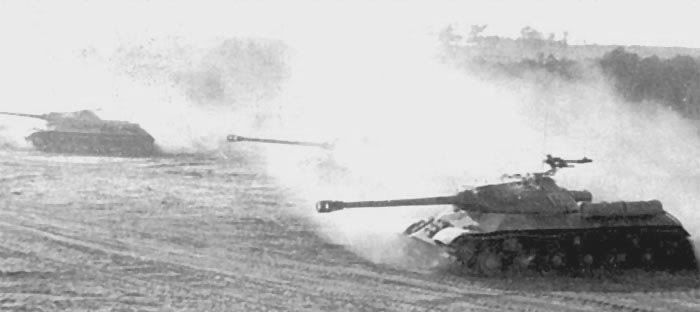
IS – 3 on maneuvers – German Democratic Republic, 1947
And if you are interested for some additional photos of the IS 3 in Budapest back there in 1956, I think that I do have somewhere those snapshots taken by Mr. Szüllő Attila, which were printed in the renowned Hungarian illustrated magazine “Regiment” in 2006… or perhaps in 2007 – I am not quite sure about that. But don’t worry - just give me some more time. 
In the meantime, as always – all the best! 
Dear Mr. Librarian!
As I have quite all “Regiments” (somewhere) I will dig for it! 
I am in quite a good relation ship of Mr. Tőrös (father of this magazine).
JS-3 is for mi a NICE, but noticeable failure - it was never so famous and reliable that its predecessor - and JS-3M even outlived this heavy tool.
Anyways, I have some very rare HARD COPIES of photos from Hungarian JS-2s in a May first parade (as it is actuality now) - mybe I scan it soon!
Have a nice weekend!